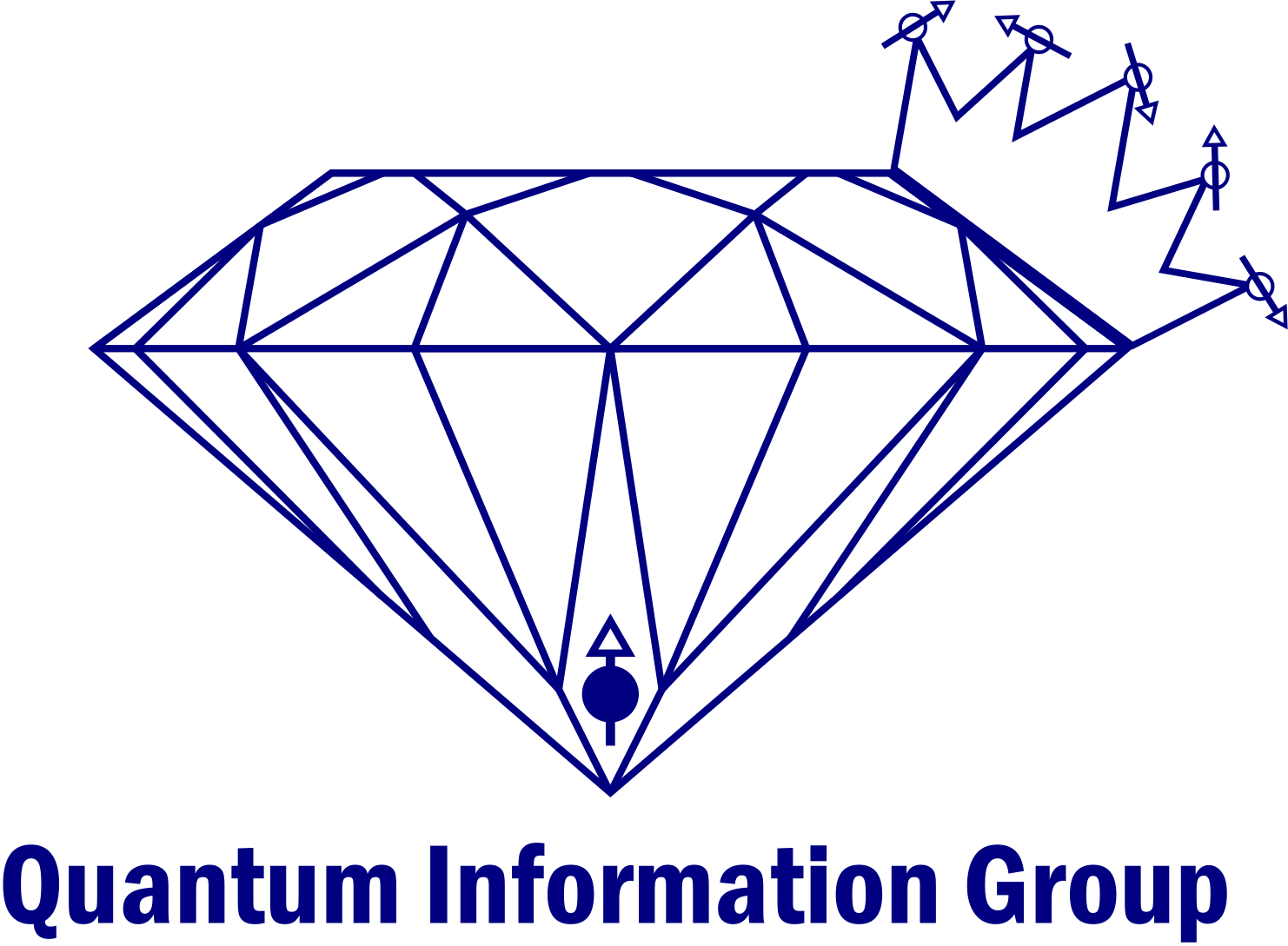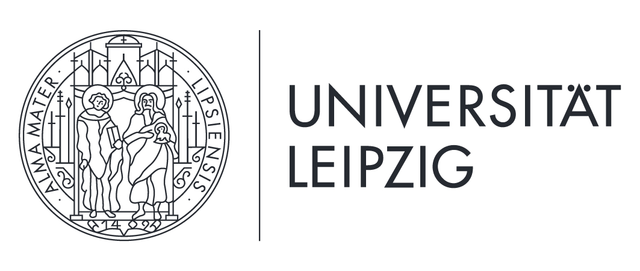From Quantum Information to Nanoscale Sensing
Summary
The Quantum Information Lab at the Leipzig University focuses on the development and application of quantum technologies for sensing at the nano- and micrometer scale. Our main research idea is to combine quantum information and nanoscale sensing by using individual quantum systems. In particular we work with defect centers in diamond such as the nitrogen-vacancy center (NV center). We combine principles of quantum information with state-of-the-art methods in spin physics, optics and solid-state physics. Our goal is to answer fundamental research questions while simultaneously creating new tools for applications in chemistry, materials science, and biophysics.
Our research activities are divided into several research topics: the engineering and characterization of novel defect centers, the use of nuclear spins as quantum memory register and as local probes, the realization of nanoscale NMR spectroscopy with diamond nanowells, as well as expansion to the micrometer scale through microfluidics and hyperpolarization. In biological samples, we investigate paramagnetic metal ions in cells, aiming to create new diagnostic tools for neurodegenerative diseases. Finally, we aim to establish nanoscale NMR as a novel method to study two-dimensional superconductors.
Defect Center Engineering: Focus on the Neutrally charged Silicon-Vacancy Center
A central goal of our material development is the understanding and control of novel defect centers in diamond, particularly the neutral silicon-vacancy center (SiV0). Unlike the negatively charged SiV− center, which has been studied extensively, the SiV0 offers a combination of long spin coherence time and high optical stability, even at liquid helium temperatures. These properties make it a promising candidate for quantum technology applications requiring both photonics and quantum memory.
We investigate the targeted creation of SiV0 centers via surface functionalization. In parallel, we use low-temperature photoluminescence spectroscopy and optically detected magnetic resonance (ODMR) to characterize their electronic states. In the long term, we aim to use the SiV0 center as a quantum sensor and to integrate it into a scalable quantum network architecture.
Quantum Memory Enhanced Nanoscale Sensing: Nuclear Spins as a resource
By coupling the NV electron spin to nearby nuclear spins — such as 13C or 14N spins — hybrid qubit systems can be realized. In these systems, the electron spin acts as a sensitive sensor, while the nuclear spin, due to its long coherence time, serves as a quantum memory. We develop and implement advanced pulse sequences for state preparation, quantum logic and single shot readout.
These strategies enable quantum memory-enhanced sensing experiments, in which external spins can be probed over significantly longer time scales. This is particularly relevant for signals which require high spectral resolution, such as in NMR spectroscopy.
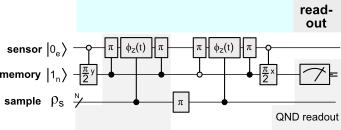
More information:
Nanoscale nuclear magnetic resonance with chemical resolution
Quantum error correction in a solid-state hybrid spin register
Nanoscale NMR: Diamond Nanowells and Single Molecule Spectroscopy
One of the central goals of our work is to push nuclear magnetic resonance (NMR) to the nanoscale — where conventional techniques fail due to limited sensitivity. NV centers in diamond offer a way forward: they act as quantum sensors capable of detecting the tiny magnetic fields produced by just a few nuclear spins. But using them for nanoscale NMR comes with challenges. Most importantly, we need to co-localize the nanoscale sensor and the nanoscale sample, ideally a single molecule, within a few nanometers. This is complicated further when working with liquid samples, where molecular diffusion quickly moves the sample out of the detection volume.
To address these limitations, we work with nanostructured diamond surfaces, so-called nanowells, that can trap zeptoliter sample volumes and limit diffusion. In collaboration with Prof. Tim Schröder's group at Humboldt University Berlin we have successfully fabricated diamond nanowells with diameters as small as 30 nm. By placing NV centers just a few nanometers below the nanowells, we can enhance the coupling between sensor and sample.
This geometry allows us to, in principle, detect the NMR signal of only a few molecules. Using dynamical decoupling sequences such as XY8 or correlation spectroscopy methods like CASR or Qdyne, we can potentially extract spectra with high resolution. In parallel, we explore biological systems that naturally exhibit nanoconfinement and compare them to our artificial nanowells.
Ultimately, our goal is to develop a tool for structural analysis of molecules in confined volumes. The combination of high sensitivity, spatial information, and spectral resolution provided by quantum sensing with NV centers is opening up the single molecule regime for NMR spectroscopy. For this project, we have acquired BMBF group funding as part of the Quantum Futur call.
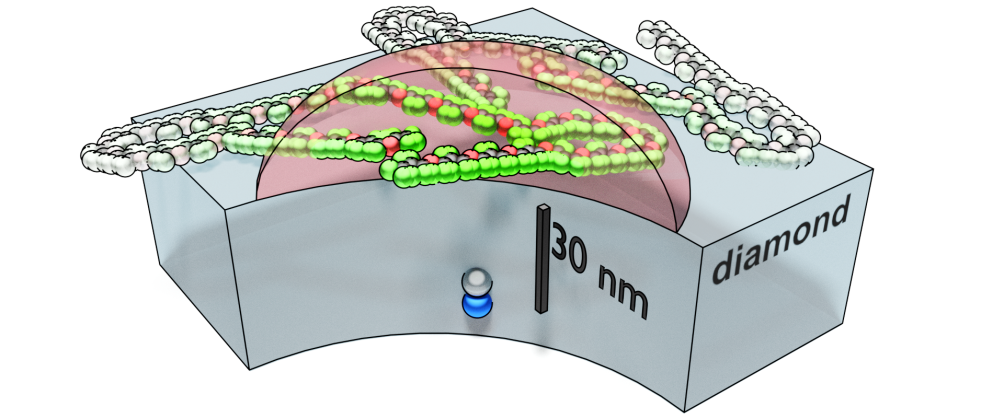


SEM images of diamond nanowells.
More Information:
Nanoscale nuclear magnetic resonance with chemical resolution and Quantum sensors for biomedical applications
Nanoscale NMR Spectroscopy of Two-Dimensional Superconductors
Understanding the microscopic nature of superconductivity particularly in two-dimensional (2D) materials, is a central goal in quantum materials research. A key question is the pairing symmetry of the Cooper pairs: whether the electrons pair with anti-aligned spins or aligned spins.
We are developing a novel method to probe this symmetry using nuclear magnetic resonance (NMR) at the nanoscale. The approach combines nitrogen-vacancy (NV) centers in diamond with ultrathin superconductors, enabling local, high-spatial resolution detection of nuclear spins.
By transfering exfoliated flakes of 2D superconductors onto the diamond surface we aim to measure two key NMR observables with NV centers: the Knight shift and spin-lattice relaxation time (T1). The Knight shift reflects the local spin susceptibility. T1 provides complementary information about low-energy excitations and the electronic density of states.
This method opens a new pathway for exploring pairing mechanisms in 2D superconductors. Our goal is to establish nanoscale NMR as a powerful tool to uncover the microscopic origin of superconductivity in systems that have remained inaccessible to conventional probes.

Image by Nicolas Palazzo.
More information:
Magnetic resonance spectroscopy of an atomically thin material using a single-spin qubit
Quantum Technology Up Close: A Hands-On Exhibit for Science Centers
In the BMBF-funded project DiQuaMus – Quantentechnologie im Museum: Diamant Quantensensoren zum Anfassen, researchers from Leipzig University, the Phaeno Science Center in Wolfsburg, and TU Braunschweig have developed an interactive exhibit that makes quantum sensing visible and accessible to the public.
At the heart of the exhibit is a diamond with nitrogen-vacancy (NV) centers, that turn the diamond into a sensitive quantum sensor. When green laser light hits the diamond, it emits red fluorescence that can be measured to detect magnetic fields. Using this principle, visitors can place different magnets on the setup and directly observe how quantum sensors respond to changing magnetic fields.
The aim is to make the abstract world of quantum technologies more accessible. To ensure long term stability, the setup uses robust, fiber-based optics and is controlled via a user-friendly touchscreen interface. The first prototype has already been successfully tested at the Phaeno Science Center, and further improvements are underway to prepare it for long-term exhibition.
The project team is now working on a second exhibit focused on quantum information, continuing their mission to bring cutting-edge research into public spaces. The overall goal of DiQuaMus is to foster public dialogue on quantum technologies and show how these invisible physical phenomena can be explored, understood, and even controlled, with modern tools.
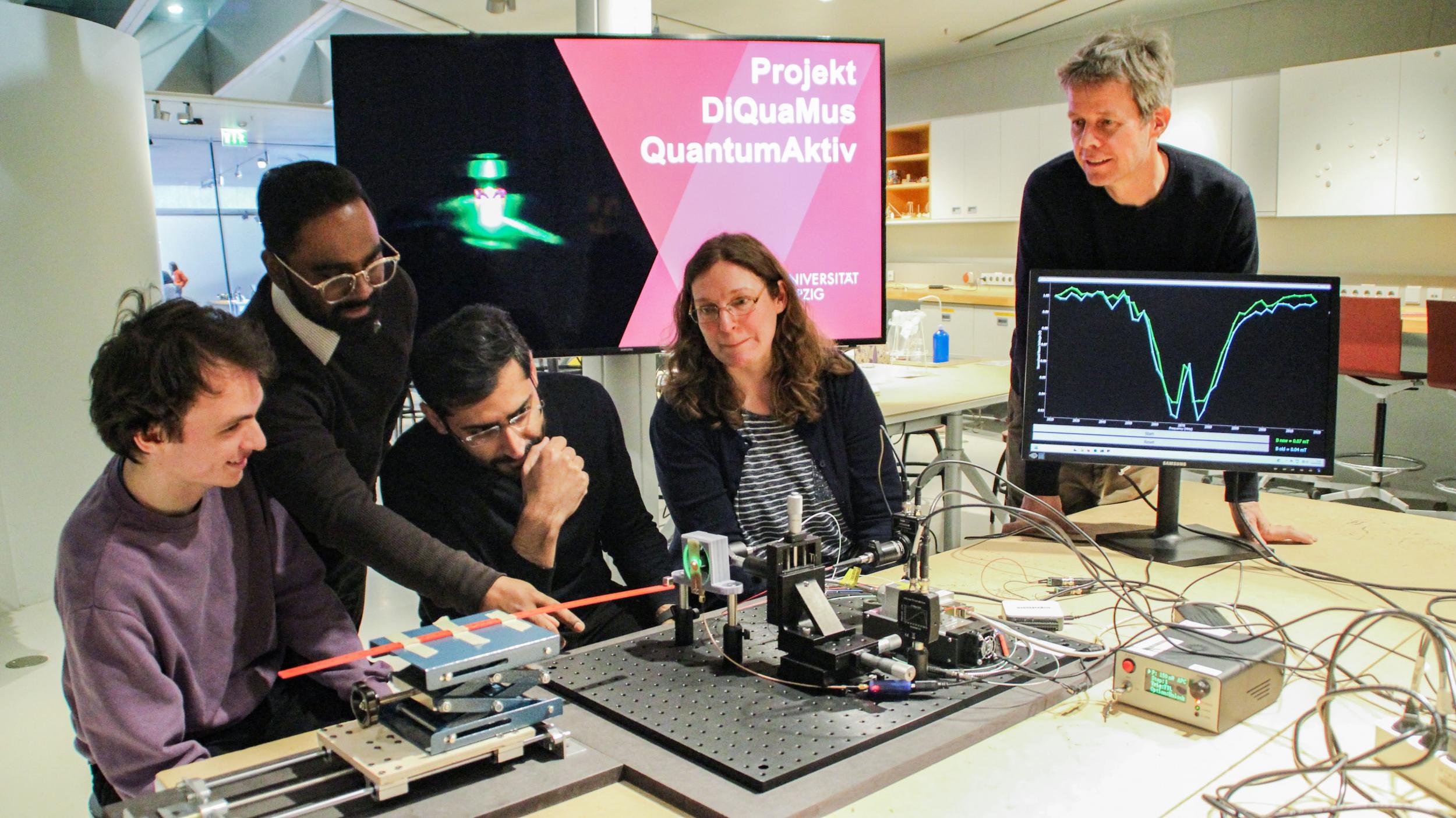
Photo: phaeno Science Museum
